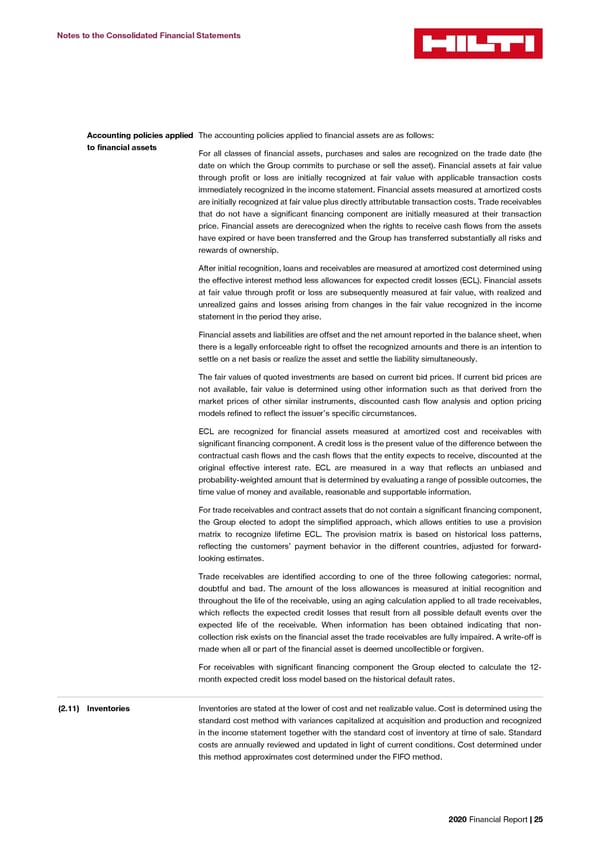Notes to the Consolidated Financial Statements Accounting policies applied The accounting policies applied to financial assets are as follows: to financial assets For all classes of financial assets, purchases and sales are recognized on the trade date (the date on which the Group commits to purchase or sell the asset). Financial assets at fair value through profit or loss are initially recognized at fair value with applicable transaction costs immediately recognized in the income statement. Financial assets measured at amortized costs are initially recognized at fair value plus directly attributable transaction costs. Trade receivables that do not have a significant financing component are initially measured at their transaction price. Financial assets are derecognized when the rights to receive cash flows from the assets have expired or have been transferred and the Group has transferred substantially all risks and rewards of ownership. After initial recognition, loans and receivables are measured at amortized cost determined using the effective interest method less allowances for expected credit losses (ECL). Financial assets at fair value through profit or loss are subsequently measured at fair value, with realized and unrealized gains and losses arising from changes in the fair value recognized in the income statement in the period they arise. Financial assets and liabilities are offset and the net amount reported in the balance sheet, when there is a legally enforceable right to offset the recognized amounts and there is an intention to settle on a net basis or realize the asset and settle the liability simultaneously. The fair values of quoted investments are based on current bid prices. If current bid prices are not available, fair value is determined using other information such as that derived from the market prices of other similar instruments, discounted cash flow analysis and option pricing models refined to reflect the issuer’s specific circumstances. ECL are recognized for financial assets measured at amortized cost and receivables with significant financing component. A credit loss is the present value of the difference between the contractual cash flows and the cash flows that the entity expects to receive, discounted at the original effective interest rate. ECL are measured in a way that reflects an unbiased and probability-weighted amount that is determined by evaluating a range of possible outcomes, the time value of money and available, reasonable and supportable information. For trade receivables and contract assets that do not contain a significant financing component, the Group elected to adopt the simplified approach, which allows entities to use a provision matrix to recognize lifetime ECL. The provision matrix is based on historical loss patterns, reflecting the customers’ payment behavior in the different countries, adjusted for forward- looking estimates. Trade receivables are identified according to one of the three following categories: normal, doubtful and bad. The amount of the loss allowances is measured at initial recognition and throughout the life of the receivable, using an aging calculation applied to all trade receivables, which reflects the expected credit losses that result from all possible default events over the expected life of the receivable. When information has been obtained indicating that non- off is collection risk exists on the financial asset the trade receivables are fully impaired. A write- made when all or part of the financial asset is deemed uncollectible or forgiven. For receivables with significant financing component the Group elected to calculate the 12- month expected credit loss model based on the historical default rates. (2.11) Inventories Inventories are stated at the lower of cost and net realizable value. Cost is determined using the standard cost method with variances capitalized at acquisition and production and recognized in the income statement together with the standard cost of inventory at time of sale. Standard costs are annually reviewed and updated in light of current conditions. Cost determined under this method approximates cost determined under the FIFO method. 2020 Financial Report | 25
 2020 Financial Report Page 26 Page 28
2020 Financial Report Page 26 Page 28